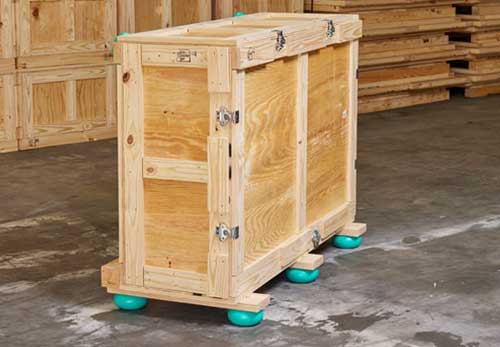Cardboard Maker and Crates
Solutions for Sustainable Packaging and Creative Design
Cardboard Maker and Crates is a major industry and an important part of packaging and logistics in the world. Cardboard is a widely-used recyclable material in nearly every sector, from retail and e-retail, to food and electronics. Explore the Art of Cardboard We walk you through all its ins and outs - what makes cardboard, types of cardboard, sustainability and many more challenges and innovations in this ever-evolving industry!
The process of cardboard manufacturing begins with the processing of raw materials, mainly wood pulp, into solid, lightweight boards to be used for shipping and other ways to use packaging. This growing demand for sustainable packaging solutions drives recycling innovations and production efficiency across the industry.

Types of Cardboard
There is different types of cardboard with multiple uses:
Corrugated Fiberboard: Specifically designed as shipping boxes, it is fundamentally composed of a fluted, corrugated sheet bonded to one or more linerboards. Cardboard Maker.
Solid Board: A dense, high-strength board suitable for graphic printing and for products demanding greater protection during transport.
Chipboard: Chipboard is a paper product that is made from recycled paper and typically used for lighter weight items like cereal boxes or backing of notepads.
Cardboard is a multi-step manufacturing process:
Pulping: The wood chips are combined with water and chemicals, then heated to decompose into cellulose fibers, creating a pulp.
Screening and Cleaning: The pulp goes through a screening process to eliminate any debris, as well as cleaning processes for consistency. Cardboard Maker.
Pulp Beating and Refining: The pulp is beaten and refined to improve the bonding characteristics of the fibers which is essential for strength.
Sheet Formation: The pulp is laid across a mesh conveyor belt where water drains away and fiber-to-fiber bonding begins to create a sheet.
Press and Dry: The sheet is sent through rollers to remove excess water from it, then sent through heated rollers to dry out completely.
This may include laminating, coating or surface treatment to improve strength, moisture resistance or printability of the sheets based on the type of cardboard being manufactured.
Story Cardboard Manufacturing Sustainability
Sustainability of cardboard industry is in highlights, with the manufacturers aiming to minimize the carbon footprint through:
Recyclability: Cardboard is one of the most recyclable materials and a large percentage of products produced from cardboard contain a high level of recycled fibres.
Sourcing: Sustainable sourcing involves wood from sustainably managed forests and/or alternative fibers such as bamboo or agricultural waste
Energy Efficiency: Manufacturing technology has advanced, meaning processes are more energy-efficient and lowering the carbon footprint of cardboard during production/ Cardboard Maker.
Water use: The sector is implementing water saving initiatives, recycling the water used in production.
Advantages offer comfort to the cardboard manufacturing industry:
Increased consumption of cardboard: The growth in e-commerce activity has led to the rise of demand for cardboard packaging and thus putting pressure on manufacturers to increase their production sustainably
Raw Material Costs: If the costs associated with purchasing wood pulp and recycled paper fluctuate, it may have an adverse effect on pricing and profitability.
Environmental Regulations: Stringent environmental regulations necessitate continual investment in cleaner, more sustainable production techniques.
Cardboard manufacturing: facing challenges and opportunities through innovation
Improved Recycling Technologies: Newer recycling techniques make for improved efficiencies and quality in the recycled cardboard, leading to a higher amount of recycled content in new products. Reduce weight of cardboard while still maintaining strength and durability to reduce material use and shipping costs.
Digital Printing: Digital printing technology is improving with the cardboard packaging which leads to high-end, customizable packaging solutions to improve brand visibility and consumer engagement.
Biodegradable Coatings: With research focusing on obtaining biodegradable coatings and adhesives, they have a bigger potential to improve the recyclability and composability of cardboard package found here.
Conclusion
Cardboard manufacturing has long been a critical element of the global supply chain, delivering cost-effective and environmentally friendly packaging solutions to meet the needs of one of the most basic human requirements food and all other life essentials. With growing demand for sustainable replacing products, manufacturers are turning to technology driven solutions and greener methods of manufacturing. Questions around raw material sourcing, environmental regulations, and the never-ending wave of innovation keep it vigilant to ensure that cardboard continues to be an essential, flexible and sustainable material going forward.

